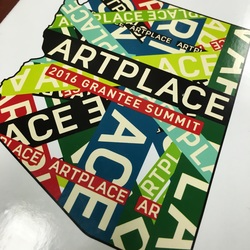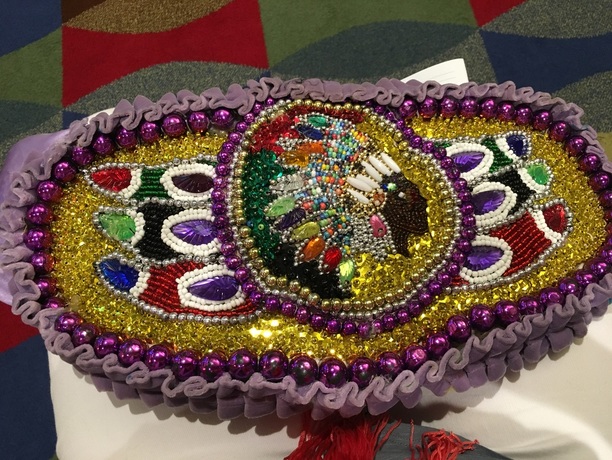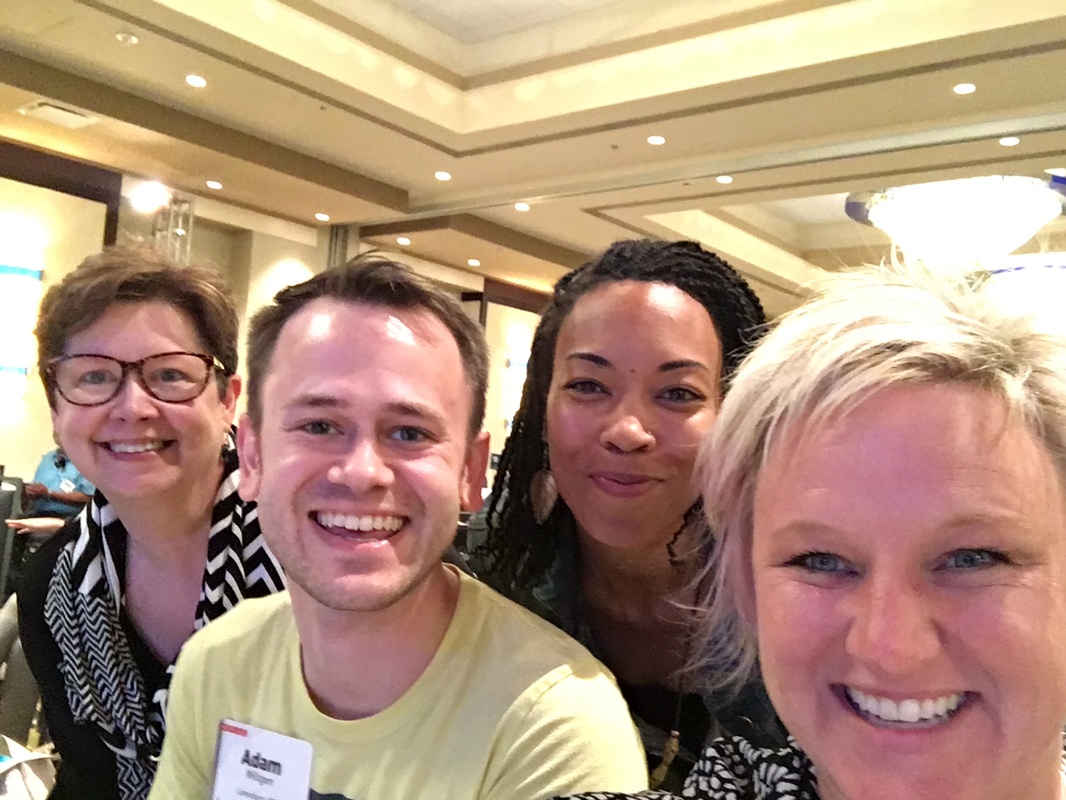|
Artists, community organizers, program directors, designers, urban planners, large community developers, small HUD offices, mayors, directors, university fellows converged in Phoenix at the generosity of ArtPlace America to explore, share and learn from the observations of those involved in creative placemaking across the country. I was one of the grateful 250 to inquire and learn from the exquisite experts, poets, social organizers and disruptors who shared space.
Artplace America is 10-year collaboration of private and public funders with a focus on community planning and development with arts and culture at the core. I attended because of involvement as Communication Manager with The Fargo Project, a 2014 grantee of the National Placemaking Fund. I don’t want to forget. So what follows is the summary of the connections I made from notes, conversations, and speakers at the 2016 ArtPlace America Summit. With openness and vulnerability each was willing to share their pieces of discovery and the passionate well of curiosity from which they draw and apply to the work (or is it play?) within their place. Together we learned some of the characteristics of great creative placemaking, the challenges, sources of discovery, the advocates, and distinguished the markers of success.
Creative placemaking projects shows the human condition.
Through a myriad of actions, the communities of creative placemaking cry, “We are beautiful. We are deserving.” Many (all?) iterations of creative placemaking seems to illustrate art as social change. The absent narrative is revealed. Through art as social change, and the process of creative placemaking we strengthen our community’s muscle for advocacy. Art gets to separate issues from people. Beauty is a basic service and need, even in places where people are at risk, in poverty or forgotten. Art is the language. Art is the voice of place. The most basic characteristics of great creative placemaking projects include communication, relationships, authenticity, a community-driven response (we grow most from the exposed conflicts), and organization. Through creative placemaking we honor place – what’s real and what exists in the minds of our community’s past and future. Meanwhile, the present is for discovery, connections and within the present lives the Process (cue the angelic ‘ahhh’).
It’s not about the art, or the outcome.
The process of each creative placemaking project includes the delivery of questions, an oral, visual and spatial inquiry, deep intentional listening, followed by a response. The process uncovers the values, secrets and shows the coded language of that community. The artist serves as the pivotal translator of the coded language. The artist and the art builds bridges. Bridges of communication, bridges for translation, bridges built of trust (and play). In some session or conversation, it was said, “progress happens at the speed of trust.” I learned each activity of a placemaking project begins and ends with an intent to build trust and follows through on the promises made through listening, even if it’s not the predicted outcome. It’s the slow build of trust that produces the response/output/objectives/needs of the community; while the artist’s response coupled with the community’s is transformative to reveal the riches of the place, people and hope, the realized potential of future. It takes time. To build trust, the artist acts early, consistently and over time. The transformation of creative placemaking does not happen quickly. It takes time to uncover the pain of isolation which seems to be indicative of each project to various degree. And it takes time to build the thin cord of trust to which each player adds to strengthen and build. Time to prove the actions of outsiders are authentic, encouraging. Time to prove possibility. Artists are everywhere. There is little to limit who plays actor and advocate in the creators of place. It’s the neighborhood pastor, mayor, grandmother, long-time volunteer or those long-gone who once called the place home. Each place and project has its critics. While artists may be successfully imported into a placemaking project, they do so with an attitude of listening and engaging the community; it’s the difference between working with and working for. Yet artists are in every place: in the police department, at city hall, next door and those artists in place can and should be validated and empowered to carry on.
Pay the artist, pay the players.
The artist learns from the people of place and draws from the knowledge of the experts within. Each community has in-place experts with lifetimes worth of knowledge and deserve a compensation for their time in the artist’s process of inquiry and discovery. It may be a $200 stipend for each month a neighborhood kid shows-up to learn the skills to interview the elder they’ve never spoken to, or a gift certificate to participate in multiple community meetings and conversations. The benefit of ArtPlace America funding is the acknowledgement this special inquiry takes time, it takes skill. We agree the artist’s time is valued and through the experience working in a creative placemaking venture she continues to grow and expand her work and passion. Whether the artist fills a fulltime position in city government, is the owner of a film studio, yogi, or has a fulltime gig outside her artwork, creative placemaking strives to grow the capacity of artists and contributes to the care and feeding of those artists as a means of work and compensation.
Communion.
Where there is disconnect, creative placemaking strives to connect. The act of breaking bread with people exemplifies the most basic, universal of human interactions to build trust and intimacy. To break bread or provide a meal is a ritual of many cultures so deeply ingrained into a social fabric it is considered holy, an offering, an act that builds connection and community. Over and over people told stories of breaking bread, sharing a meal to engage and begin to build trust. Over and over It was illustrated the tower of isolation began to crack over a shared meal. Possibility. I made fast friends with intense people passionate about their place, who’ve identified a community need and solution as intuitively as breath, who pull from the well of their experience an overlay of hope to create some gem. The artists, planners, organizers, poets emerged in front of me as mystics –ushers of possibility, beauty and goodness. They speak love. They shed light on the beautiful and acknowledge that our human experience is part broken, part beautiful, and utterly exquisite. Thank you ArtPlace, for the encounters, the foray into delight of place. In part to serve my memory I’d like to thank the porters of work done across our country, to continue to explore and learn from them. Following are the people who shared their stories with me during the social hours of the Summit, over dinner, dancing, twirling on a spun chair, drinks, walks, at breakfast, in workshop, and at play. Thank you all.
(Jen) Relocate Kivalina, AK
(Justin) Sunset Bridge Project, San Jose, CA (Sarah) Southwest Minnesota Housing Partnership (Searle) Jamestown Art Center, Jamestown, ND (Kevin) Common Ground, Montgomery, AL (Keith) Tucson Audubon Society ART | ECO: Placemaking Patagonia, Arizona (Ramona Lisa) Fairmont Cultural Corridor, Roxbury and Dorchester, MA (Tony & Angie) 303 ArtWay - Northeast Denver Art, Health and Heritage Trail, Denver, CO (Tamara & Sophie) The New Buchanan Mall, San Francisco, CA (Tiasia) Museum of Contemporary African Diasporan Arts, Brooklyn, NY (Big Chief & Matty) Foundation for Louisiana, The Mardi Gras Indian Campus: Eyes on the Park, New Orleans, LA; (Kate) Department of Play, Boston, MA (Dawn) Art Shanty Projects’ On—Ice Program, White Bear Lake (Meg) Western Folklife Center Ranch Lines – Moving Rural Verse, Elko, NV (Ian) Reading Terminal Market Streetscaping Filbert Street, Philidelphia, PA (Shelly) Uniontown Creativity Center, Uniontown, WA Best for last…TheRUExchange Team (pictured above) (Adam) Lanesboro Arts Campus, 2013 | Lanesboro, MN (Caran) Main Street Creative Corridor, Little Rock, AR (Aya) UChicago Arts & Public Life, Chicago, IL and Haji Courture, Oakland, CA (Rachel, me) The Fargo Project, Fargo, ND
0 Comments
Your comment will be posted after it is approved.
Leave a Reply. |
Reach PartnersYour partners in leadership. Categories
All
Archives
July 2024
|
|
|
Reach Partners, Inc
3330 Fiechtner Dr. Suite 100 Fargo, ND 58103-2321 701-271-8170 Copyright (C) 2024 Reach Partners Inc.
|





